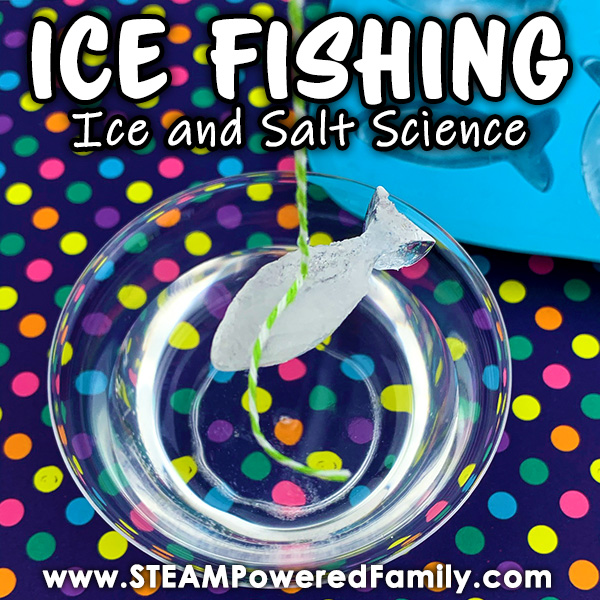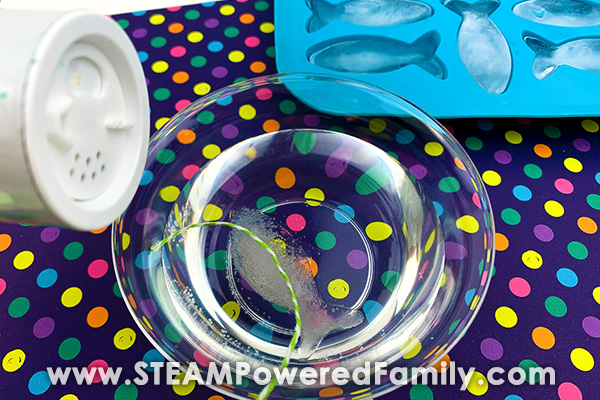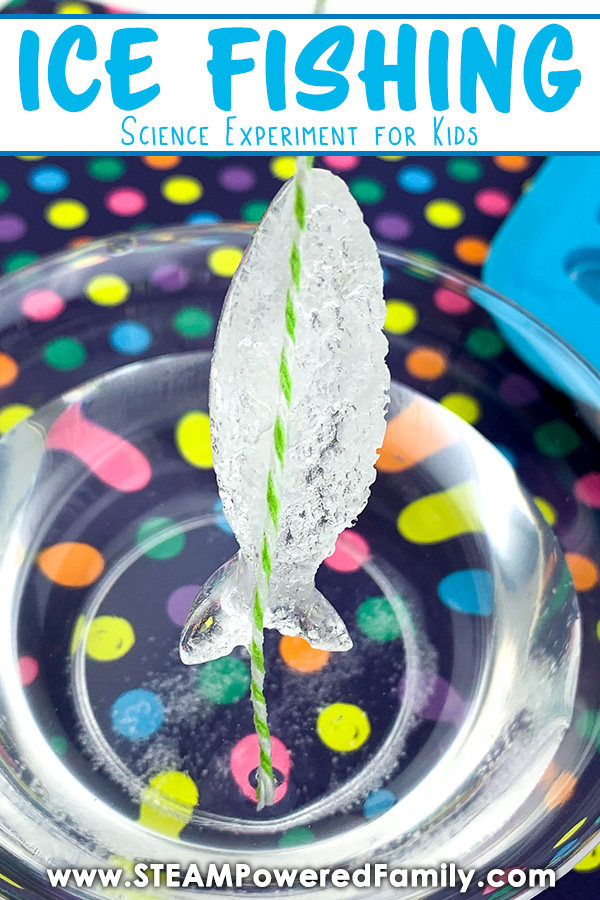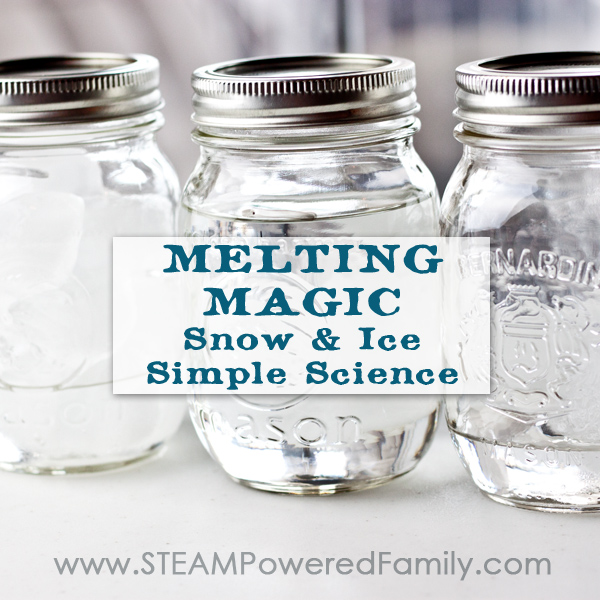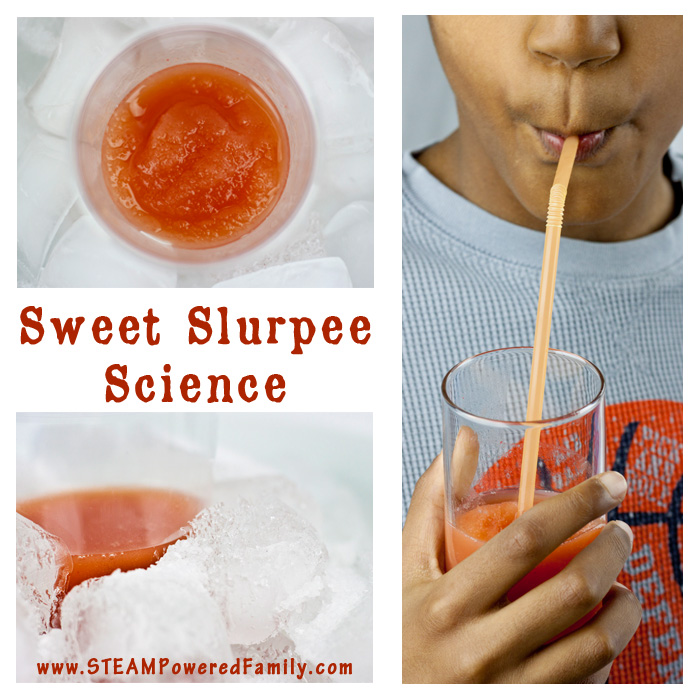Ice Fishing Science Experiment for Kids
Looking for a fun experiment for your preschool to early elementary kids? Why not try ice fishing! No travel required with this science experiment that uses simple supplies and tools. Kids will love the thrill of the catch, while also learning some important principals and the scientific method. Plus you can do it all year long.
Salt and Ice Experiment for Kids
Disclaimer: This article may contain commission or affiliate links. As an Amazon Influencer I earn from qualifying purchases.
Not seeing our videos? Turn off any adblockers to ensure our video feed can be seen. Or visit our YouTube channel to see if the video has been uploaded there. We are slowly uploading our archives. Thanks!
Whether it is the heat of summer and you need something to help your kids cool off, or the middle of winter, this ice experiment is such a great project to do with your kids. Although I would recommend this science experiment for kids preschool to about grade 2, even older kids will get a kick out of catching the fish.
The best part is that it is super budget friendly.
Ice Fishing Experiment Supplies
Silicone fish or shark tray (using shark fin molds makes this a great shark week activity!)
Water
Food coloring (if desired)
Bowl
Salt (try different types if you can, at minimum have table salt)
Straws or sticks (need at least 2)
String (cut about 12in. long)
Directions
First we need to make our fish! Fill the fish ice cube tray with water, add a couple of drops of food colouring if you wish to give your fish some character. Place in the freezer for a few hours or overnight. Until they are completely frozen.
When you are ready to do the science experiment, the first step is to fill the bowl with water and add a couple of drops of blue food colouring if you want blue water. Stir with one of the sticks until the water is completely blue.
NOTE: If your kids LOVE to splash, you may not want to colour the water to prevent staining on clothes.
Next, work with your kids to build a fishing rod. This is done easily by taking a stick and tying a string on the end. If you have young engineers or artists, they may want to get creative in their building of their rod.
Now before we start, take a moment to talk to the kids about the experiment steps, then ask them to form a hypothesis about what they think will happen. This is a great way to encourage scientific thinking and understanding of the scientific method.
Place a fish into the bowl of water.
Have the child try to place the end of the string from their fishing rod on the fish. I recommend placing the line from the head to the tail if possible. Adult help may be required.
Shake a little salt over the string. Think of the salt like bait.
Wait a few seconds. Then try to lift the rod up to see if you caught the fish! The salt will help melt the ice and the string should stick to the fish.
Not every cast will be successful, just like when we go fishing at the lake. If the fish isn’t caught, try to line up the string evenly again, then pour more salt on the fish. Wait a little while and see if you can reel in that trophy fish!
Experiment Extensions
What happens if you do the experiment without the bowl of water?
What if you added a hook (paperclip) to the end of your string? How does that affect your results?
Try different salts and see if different salts provide different results.
Turn this into a race against the clock or against other teams to see who can catch the most fish! A great challenge for summer camp or the classroom.
The Science Behind Ice Fishing Experiment
Salt lowers the freezing point of the ice which is normally 0C/32F. This causes the salted part of the ice to pull heat from the air and water in order to melt the ice. The more salt you add, the more melting will happen. But then a little science magic happens.
As the ice cube melts where the salt is, the melted water starts to dilute the salt, bringing that freezing point back up, so it starts to freeze again. The ice fish refreezes, trapping the string, so you can catch your fish.
The brilliant part about this science is that it all happens very quickly.
Try using a magnifying glass to see if you can see the process of melting and refreezing.
More Ice and Salt Experiments
Dig into the science of salt and ice even more our Winter Road Salt Experiment and our Slurpee Science Experiment (perfect for cooling off on a hot day). I highly recommend doing the Slurpee experiment while doing the ice fishing, so you can have a cool drink, created with the same scientific principles!


